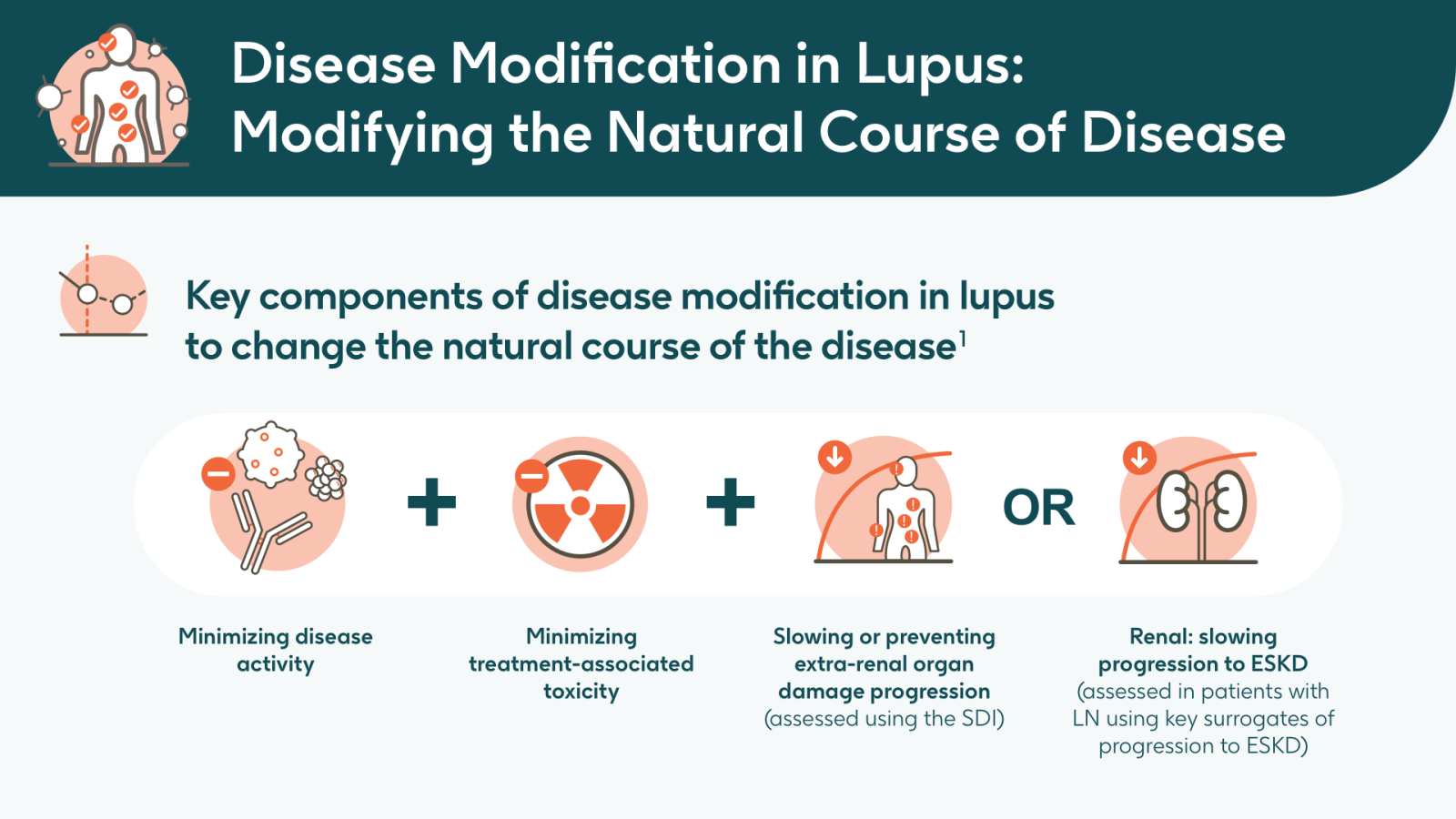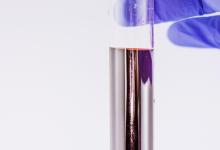Disease Modification in Lupus and Lupus Nephritis: Modifying the Natural Course of the Disease Save

A definition for disease modification in lupus and lupus nephritis has recently been proposed in a paper by van Vollenhoven et al.1
In this infographic and interactive activity, learn about the outcomes that should be assessed to prevent organ damage, and potential detours to be aware of along a patient’s journey to disease modification.
Infographic: Disease Modification in Lupus

New to the concept of disease modification? Learn how it could be used to help treat patients with lupus in your clinical practice.
Interactive Patient Journey: Disease Modification in Lupus Nephritis

Follow a patient with lupus nephritis through their disease modification journey.
Open the interactive patient journey
References:
1van Vollenhoven R, et al. Lupus Sci Med. 2022; 9(1):e000634.
Learn About Scientific Advances in Monitoring for Renal Damage Accrual in Lupus Nephritis
Complete renal response is a key outcome to monitor renal damage accrual in lupus nephritis,1 and is usually defined as proteinuria <0.5 g/24 hours.2 However, patients who have achieved this proteinuria goal often still have renal disease activity.2-4
This video and podcast presented by Dr. Michelle Petri, Professor of Medicine at the Hopkins Lupus Center, describes how estimated glomerular filtration rate (eGFR) slope may be a valid surrogate endpoint for monitoring renal damage accrual in lupus nephritis.5
This content is also available as a 10-minute podcast

References:
- Fanouriakis A, et al. Ann Rheum Dis. 2020;79:713–23.
- Weeding E et al. Lupus Sci Med. 2022;9:e000684.
- Malvar A et al. Nephrol Dial Transplant. 2017;32:1338–44.
- De Rosa M et al. Kidney Int. 2018;94:788–94.
- Levey AS et al. Am J Kidney Dis. 2020;75(1):84–104.
Share your feedback:
Share feedback on this program by completing a short survey
PSE-US-1796 | April 2023





